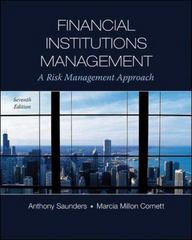
Mabece Investments is considering investing in a 135,000 square foot warehouse property. The building is currently leased at R4.00 per square foot per annum, triple net; this rent will stay constant over the remaining 10 years on the lease. Because the tenant is a high-quality, national tenant, Mabece believes that a 2.5 percent vacancy allowance is appropriate for this analysis. Operating expenses on the building is forecasted at 5% of effective gross income and would remain constant. A recent appraisal estimated this property's building value at R5 million Mabece Investments expects to purchase this building for R4.5 million, with acquisition costs of 2 percent of the purchase price. A loan is available at a partially amortized loan over 25 years at 7.25 percent interest with monthly payments, with a balloon payment of 45% of the initial loan at expiration. The lender's maximum loan-to-value ratio is 75 percent, while its minimum debt coverage ratio is 1.25; the lender will charge 2% in conjunction with this loan, this is embedded in the loan repayments. The property will be put in service on January 1, 2014. The expected holding period is 5 years expected sale date of December 31, 2018), at which time it will be sold at a 12.5 percent terminal cap rate. Transaction costs at the time of sale are expected to be 4 percent of the gross sale price. Mabece is expecting to sell the property at market value at his proposed exit plan. *NOI should be used for estimating future values. The required rate of return is 8% (1) Write out this property's pro forma operating statement for the first year. What is the first year NOI? (4%) At what cap rate is Mabece purchasing this property? (3%) (ii) Based on the lender's underwriting guidelines outlined above, What is the largest loan amount Mabece can expect on this property? (3%) What is the annual debt service on this loan? (3%) What is the debt coverage ratio? (3%) What is Mabece's first-year before-tax cash flow? (4%) Does this property exhibit positive or negative leverage? How do you know? What does this tell you about this investment? (7%) (iii) Calculate the before -tax equity reversion from the sale of this property at the end of year 5. Once again, clearly label each of the figures you calculate to derive these figures. (5%) (iv)Assume that the Before-tax cash flow from operations will be R195,010, R193,963, R192,839, R190,599 in years 2 through 5, respectively. Using the year-1 Before tax cash flow you have calculated in conjunction with these figures, what is the before-tax IRR of this investment? Based on this analysis, is this a worthwhile investment for Mabece? (8%)







